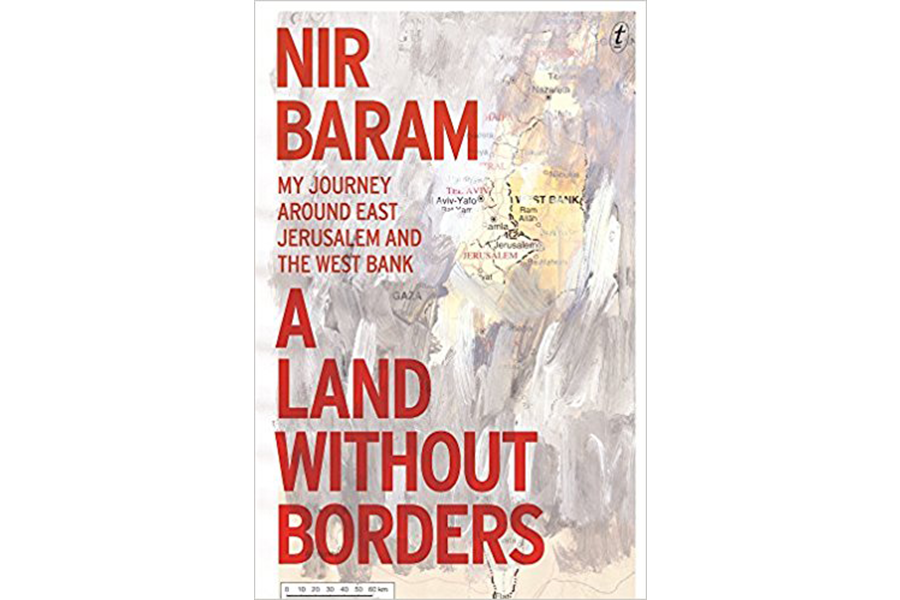'A Land Without Borders' rethinks the two-state solution in the Middle East
Loading...
This year marks a half-century of Israel’s occupation of the West Bank and East Jerusalem, which were among the spoils of its Six Day War with Egypt, Jordan, and Syria in 1967. It is a political stalemate that all interested parties, especially the Palestinians, had hoped would be resolved by now. But hope is in short supply in the Holy Land today.
Time hasn’t healed all wounds, but rather created new ones. Israel subsequently annexed East Jerusalem, an act which neither the Palestinians nor the United Nations have accepted, while the official status of the West Bank has not changed since 1967: It remains occupied territory.
Each year brings more Israeli settlers to the West Bank and new acts of violent retaliation by Palestinians against their occupiers. New walls, checkpoints, and rules increasingly separate Jews and Palestinians, even those living in close proximity, making life ever more difficult for the latter. Many believe a third Intifada is merely a matter of time.
In the teeth of this geopolitical gloom, Nir Baram, an Israeli novelist and journalist, set out not so much to untie the Gordian Knot, but to examine its tangled strands. Before devising a solution, after all, one must understand the problem in its most recent incarnation.
In A Land Without Borders: My Journey Around East Jerusalem and the West Bank, the author treks from Palestinian refugee camps to Jewish settlements, from kibbutzim to Palestinian neighborhoods in East Jerusalem, as well as places in between. It is an engaging, fast-paced odyssey that conveys an intimate understanding of why peace remains so elusive.
The only flaw in the book, which is translated from Hebrew, is that the author sometimes gives the general reader too much credit for knowledge of local politics and mores. A few more footnotes would have been most welcome.
That said, Nir Baram does what more people in the region should undertake: a grand listening tour that encompasses all sides of the conflict. The author is a good listener, too, albeit one who isn’t afraid to ask hard questions. Consider this one he puts to a group of fellow Jewish leftists, who historically have been sympathetic to entertaining compromises to advance the peace process: “Do you believe Israel owes the Palestinians reparations for the 1948 deportations? After all, they did lose tens of billions of dollars’ worth of assets in today’s terms.”
But this is a compromise too far and responses range “from contempt to fury to mockery.” Baram concludes that it isn’t that these Israelis contest his premise – that Palestinians lost homes, villages, land and often livelihoods – but that something else is at play: “They’re simply programmed not to grapple with the question. They have made up their minds to push 1948 out of their political consciousness.”
In like fashion, Palestinians are wont to ignore or deny inconvenient facts on the ground. The author is taken aback when Palestinians whom he is talking with won’t concede that three Israeli teenagers who were kidnapped in the West Bank and murdered in 2014 were victims of Hamas – or even victims at all. Rather, all evidence to the contrary, they insist that the boys died as a result of an accident.
But many things are incontestable, such as the ongoing hostilities between Jews and Palestinians at, of all places, holy places: the Western Wall and the al-Aqsa Mosque in Jerusalem. Trash talking between the Jews and Muslims is common there, and riot police and, on occasion, tear gas are necessary to keep the peace.
The reader learns at the start that the author is an activist who has long advocated for the traditional two-state solution to the impasse. But it isn’t until chapter three that Baram reveals he recently has become a member of an ecumenical Israeli-Palestinian peace initiative. “Two States One Homeland” proffers something of a hybrid solution calling for two states within open borders: i.e. Israelis and Palestinians would be free not only to travel within their shared boundaries, but also to be residents in the state of the other (although not a citizen).
Nonetheless, Baram’s strong suit is not in pinpointing a solution, but in illuminating the festering problem. The author documents that he is far from the only one who has relegated the sacrosanct two-state solution to the ash heap of history. In something of an irony, he points out that while Jews and Palestinians may be more and more separated from one another in their daily lives, their communities are increasingly intertwined geographically and otherwise, especially in the West Bank. This relentless reality would make carving two distinct states out of the land they now share a delicate operation, indeed.
Perhaps the best argument for a fresh look at the standoff comes from a Palestinian man, whose family has experienced the heavy hand of both Israeli settlers and soldiers. He points out that both sides have failed: “After more than a hundred and twenty years of Zionism, after all their ploys, the Jews are still a minority in the land of Israel, and they live with constant violence and war. The national Palestinian movement has also failed, since it hasn’t been able to get rid of the occupation. If everyone here realizes they’ve failed, we might be able to build something from the ground up.”








